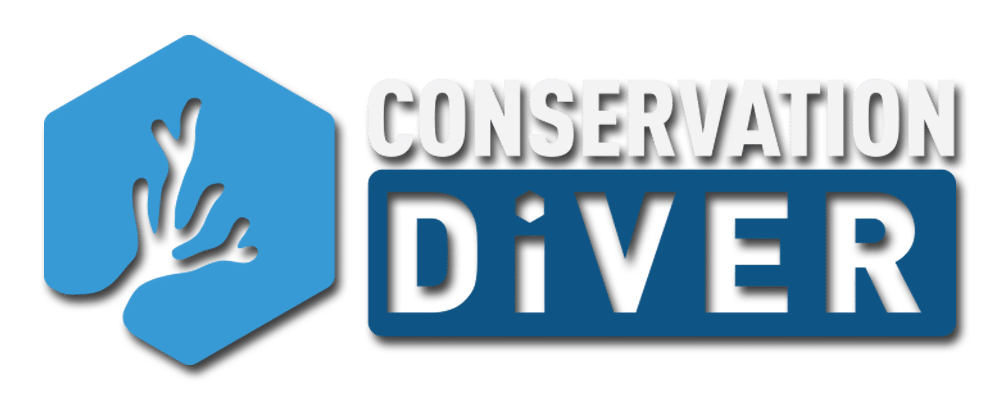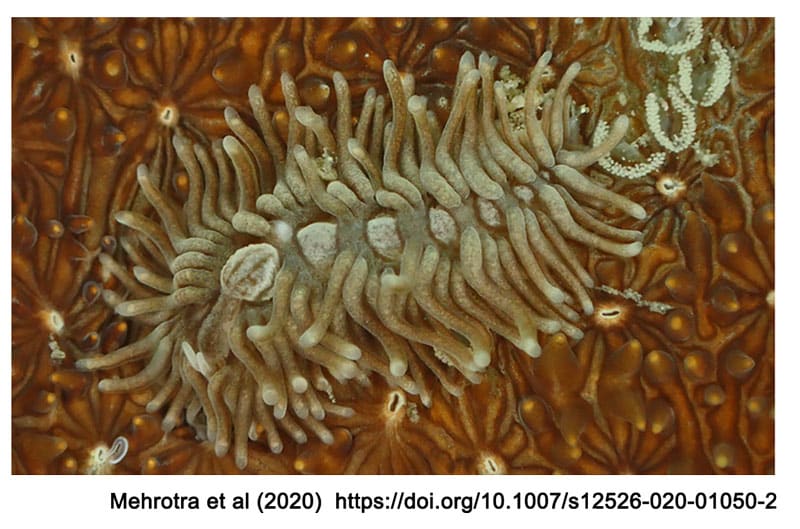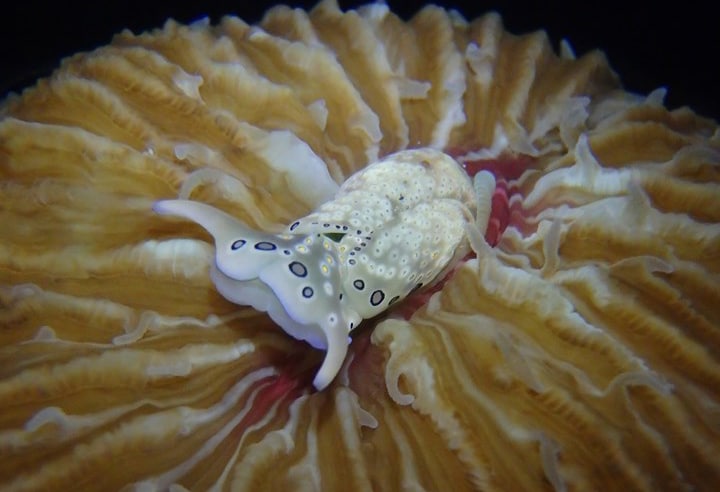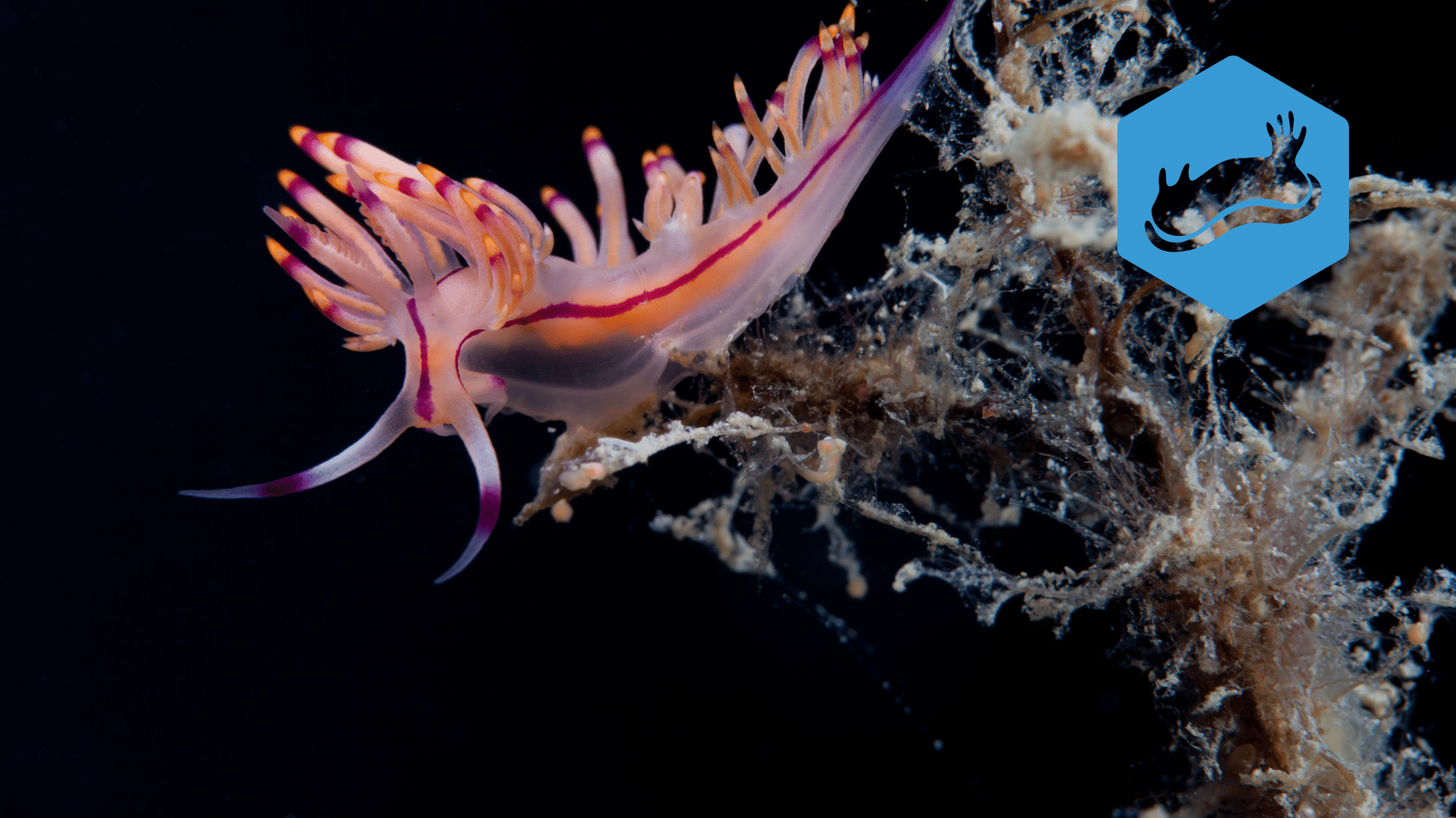A New Species of Coral-Eating Nudibranch
A new species of coralllivorous nudibranch has just been discovered by our friend and colleague, Dr. Rahul Mehrotra. The new species, which he named Phestilla viei, was described in a recent article in the journal Marine Biodiversity, titled “A new species of coral-feeding nudibranch (Mollusca: Gastropoda) from the Gulf of Thailand.” Not only does this paper provide record of this new species, but it also helps to clarify the systematics of the genera, which currently contains 8 coral-feeding species that have been revised several times over the last few decades.

This study was conducted as part of Rahul’s PhD, which has yielded several other impressive firsts for the world of sea slugs, including the observation that there are corals which feed on sea slugs, as well as three other first records of species found from Koh Tao; including Unidentia aliciae in 2019, as well as Arminia occulta and Armina scotti in 2017.
The new species, Phestilla viei, was first found on the island of Koh Tao, Thailand by Conservation Diver board member, Spencer Arnold, who was a co-author on the paper. He found the first individual on a coral of the species Pavona explanulata, a resilient coral species which is becoming more prevalent on the island as it replaces some of the less robust species in the face of climate change and localized anthropogenic stresses. The novel species was named after local nudibranch enthusiast and citizen scientists, Mr. Vie Panyarachun, well known for his vast contributions in recording and curating sea slug records from Thai waters.
After the first observation, Rahul and his team conducted a series of surveys to locate more individuals and evaluate their ecology, anatomy, and genetics. All of the individuals found were on the same species of coral, implying that they are an obligate parasite of the sceleractinian, Pavona. Because of this obligate relationship, the morphology of the nudibranch is such that it closely resembles the coral, making it very difficult to find. Rahul and his co-authors stated in the paper that the easiest way to find them is to actually look for the feeding scars and egg trails, and then to look for the individuals making them.
Another amazing trait which makes this cryptic species so difficult to observe is that it actually ‘steals’ symbiodinium (the unicellular algae which power the coral) and integrates them into their bodies rather than digesting them, in a process termed “kleptosymbiosis.” Although this species is a corallivore, it does not appear to be a major threat to coral populations, as it was never observed to eat the entire coral, and no overpopulations or outbreaks have been documented.
Although this was the first scientific description, observations of the species have been made in other parts of the Western Pacific, including Indonesia, Madagascar, Papua New Guinea, and the Philippines. Now that more divers know about this species, and where to look for it, surely it will be observed in many other countries over the next few years.
After reading the article, we had some questions for Dr. Mehrotra, so we interrupted his work to interview him about his findings and current projects.
Q1: This is a very interesting finding, when did you first become aware of these species, and how did you first spot it?
I came across reference to a similar species in a couple of references, however with very little corresponding information. After finding a paper documenting this from Hong Kong feeding on Pavona decussata, I considered the possibility that we may have this on Koh Tao. The truth is, I simply needed to share this paper with Spencer who used his remarkable skills in a matter of weeks to find a similar species feeding on a different prey at Koh Tao.
Q2:As this is the fourth new species you have described for the region, do you think Koh Tao is a particular hotspot for sea slugs, or do you expect other regions in the Gulf to have similar levels of biodiversity?
This is the fourth species of nudibranch to be described from Koh Tao, which has indeed been the home of much of the sea slug research from Thailand over the past decade. However, our data from other locations suggests that, while Koh Tao does seem to offer a diversity of species distinct from what is commonly found elsewhere in the Gulf, the richness of discoveries is largely due to the focused study in the area. Many places in Thailand appear to host species that are awaiting a closer investigation.
Q3: You named this nudibranch after Mr. Vie Panyarachu, how has he influenced your work over the years, or the status of nudibranchs in Thailand in general?
Vie Panyarachun is a keen recreational diver and naturalist who has played a remarkable role in curating records of sea slug diversity in the country. His work as a citizen scientist has helped create a repository of species as well as playing an active role in sharing the world of sea slugs with the SCUBA diving community in Thailand.
Q4: why do you think it is important that populations of nudibranchs in the region are recorded and monitored?
Nudibranchs and other sea slugs have been shown to play a variety of roles economically and ecologically, however few of these have been investigated thoroughly. Monitoring sea slug diversity has already led to remarkable documentation on the hidden impacts of climate change and species invasions. The importance of monitoring sea slugs in the Western-Pacific, home to the most biodiverse marine environments in the world, allows us to dig deeper into the complex ecology of the region. In a time where hundreds of invertebrate species are known to have been regionally displaced or gone extinct only to be discovered/rediscovered after the fact, detailed monitoring of such understudied groups may allow us to catch large scale threats before they take hold. Many sea slugs have been associated with very specific prey organisms, and thus the fate of any given species is also intricately tied to the resilience of its prey. The species we describe here for example has been found exclusively on a single species of coral, with similar species of coral either hosting their own distinct species of nudibranch, or none at all. Many reef building corals such as the prey of P. viei are susceptible to threats such as coral bleaching. We have little evidence at present to suggest that populations of P. viei would could show enough dietary plasticity to shift hosts to a more resilient prey should these threats escalate.
Q5: What are you currently working on, or towards, regarding sea slugs in Thailand?
I am in the process of completing my work from Koh Tao, documenting further ecologically relevant observations. My work on sea slugs will be transitioning to other fields soon too, so as to provide a more solid framework for further research on sea slug biology in Thailand.
We want to pass our sincerest congratulations to Rahul for this valuable and important work, and wish him all the best in his future ventures, which we follow very closely and support in any way we can. We also want to congratulate Spencer Arnold on his find, and his invaluable assistance to this study, he has an eye for finding tiny sea slugs like no one else. We also want to congratulate Mr. Vei on the species being named for him, and for all his contributions to the field over the years.
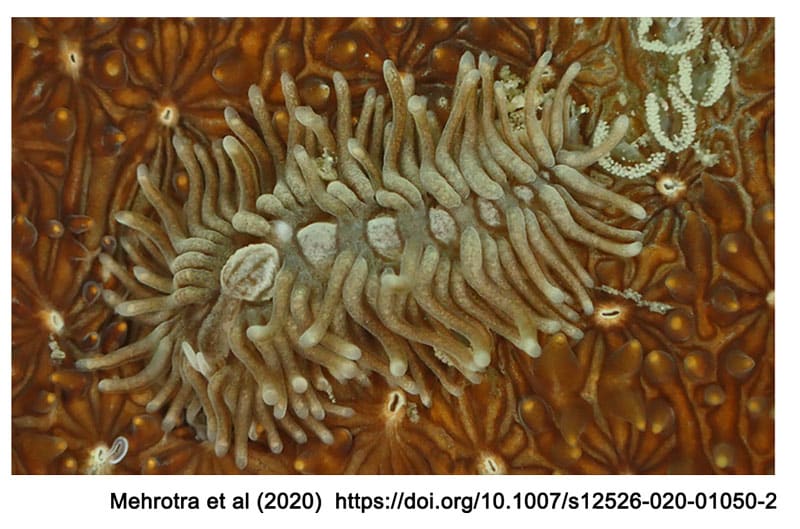
Corals Have Evolved to Eat Sea Slugs
Hard corals are generally thought of as autotrophs, or organisms which produce most of their own metabolic energy and contribute to the base of the food chain in the ecosystem. Although most reef-building corals do feed on plankton, they meet 75-95% of their energy demands by harvesting symbiotic micro-algae within their tissues, and are thus getting their sugars and carbohydrates indirectly through photosynthesis. However, this view of corals is currently in debate, and it looks like a more diversified diet could be utilized by some corals to meet their daily energy demands. This has been the study of Conservation Diver Instructor and Board Member, Rahul Mehrotra.
Investigating what corals can eat
Initially, Rahul showed back in 2015 that Heteropsammia corals used their large mouth size to opportunistically consume salps during seasonal blooms. This was observed In Situ on several occasions in the ‘muck’ areas around Koh Tao, and documented in the journal Marine Biodiversity. By chance, a student of the New Heaven Reef Conservation Program, Joel Rohrer observed a mushroom coral ingesting a sea slug during a coral reef survey, and alerted it to Rahul’s attention. From that single observation, investigations began into the question, “Are reef building corals actively feeding on sea slugs for additional energy?” A question which would take 4 years to investigate.
Experiments were devised as a series of both in situ and ex-situ trials to test his hypothesis, which was that corals take advantage of their proximity with Sacoglossan sea slugs and their large gape to facilitate heterotrophy. The experiment looked at several factors, the size of the coral, the size and species of the sea slug, and the likelihood of ingestion. He used aquarium feeding trials to test whether or not it was even possible for the mushroom corals to capture, transport, and ingest the slugs, and looked at the rate of rejection based on slug size and species. Following those trials, he also performed field tests to ensure that this adaptation was actually going on in the wild populations.
The study’s conclusions
Based on 240 trials, it was concluded that prey species and prey size are the greatest factors in successful predation of sea slugs by corals, rather than the type or size of the corals themselves. Of the six species of prey slugs tested, consumption rates were highest for species of the genera Costasiella and Elysia, with significantly less success when attempting to ingest those of the Plakobranchus genus. Additionally, when these sea slugs were rejected after consumption by the corals, the slugs were covered with a mucus that is thought to be a defensive mechanism by the corals to prevent damage caused by the slug’s defensive measures.
What this means
Rahul’s work has helped to expand the way we think about coral feeding behaviors, as well as their place in the trophic structure of reefs. We now know that they feed on large plankton (salps and small jellyfish) in addition to the nearly microscopic prey they have always been known to. Furthermore, we now see that they are actively feeding on benthic organisms, not only those floating in the water column. This may be an adaptation to increase the amount of energy they receive from heterotrophy to allow them less reliance on their symbiotic algae, or as a way to gain beneficial micro- and macro-nutrients that could be essential for their growth and development. Additionally, the data adds to the incredibly sparse understanding on predators of sea slugs (which are all toxic) and overall ecology in tropical reef habitats. As these new observations are investigated further, we are sure they will yield some more surprising and exciting information which will continue to modify our views of this very important class of reef organisms.
The full paper is available free of charge from the publisher's website
The Koh Tao Team Makes a New Nudibranch Discovery
A new discovery of a species of nudibranch was recently described by our partners on Koh Tao, the New Heaven Reef Conservation Program. The previously undescribed species was first recorded on the team’s coral nurseries in 2009, while instructors and students were preforming their regular maintenance duties. They did not initially realize the importance of their discovery, and were merely mesmerized by the beauty of this unique sea slug.
Later, Conservation Diver trainer and long-time NHRCP instructor, Rahul Mehrotra realized that this species was new to science while working on a paper related to his PhD. Rahul then worked with other researchers to describe the animal, which is now known as Unidentia aliciae.
This is the third nudibranch species which has been described from Koh Tao through Rahul’s work (also Arminia occulta and Armina scotti), bringing the number of known sea slugs from the island to a total of over 150 species, with several more undescribed species recorded. Rahul, and the team at the NHRCP are continuing their efforts to document and increase the knowledge of the biodiversity of the island’s reefs in a concerted effort to protect it. You can read more about this story on their website.
A New species of Sea Slug - Found on Koh Tao
Biodiversity is one of the keys to a healthy ecosystem, and assessing biodiversity in a changing world is one of the top priories of scientists around the world, only then can we know what needs to be protected. Conservation Diver Trainer, Rahul Mehrotra at the New Heaven Reef Conservation Program (NHRCP) has been working hard for over 5 years now to record the diversity of sea slugs on the island of Koh Tao, Thailand. More recently, he has also turned this work into a PhD thesis project at Chulalongkorn University, in Bangkok.
The project has yielded some interesting results, with over 120 species of nudibranchs and sea slugs recorded for the island, bringing the total for Thaialnd to 240. A few of the species that Rahul and the rest of the NHRCP team have found are new species, or not yet described or named scientifically. Recently Rahul described one of these species, belonging to the genera Armenia. This new species, is now named Armina scotti, and is has first been described on Koh Tao, but can be found in other areas in the region.
The full paper, On the genus Armina (Gastropoda: Heterobranchia: Nudibranchia) in Thailand, has been published in the Journal of Marine Biodiveristy. Also keep an eye out this upcoming year for the publication of a Sea Slug guide to the Gulf of Thailand, including the over 120 species so far identified for the region.
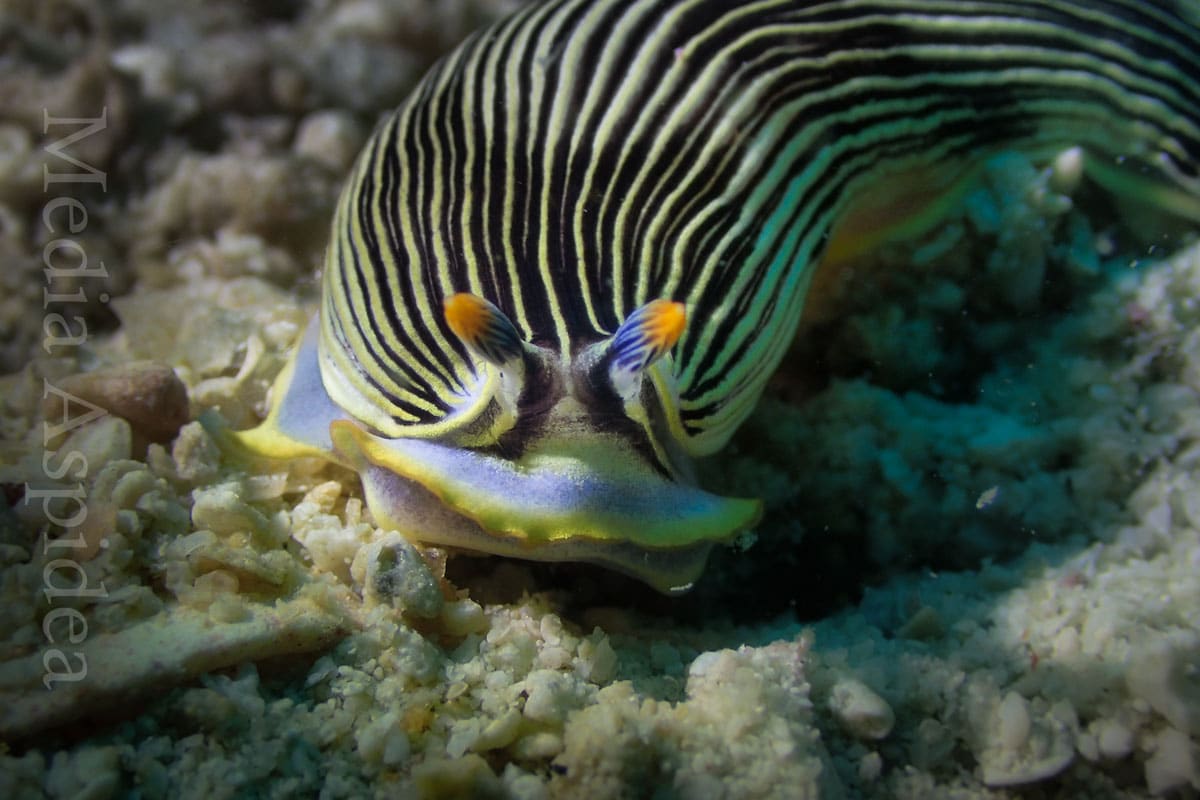
Nudibranch & Sea Slug Ecology
Nudibranch & Sea Slug Ecology
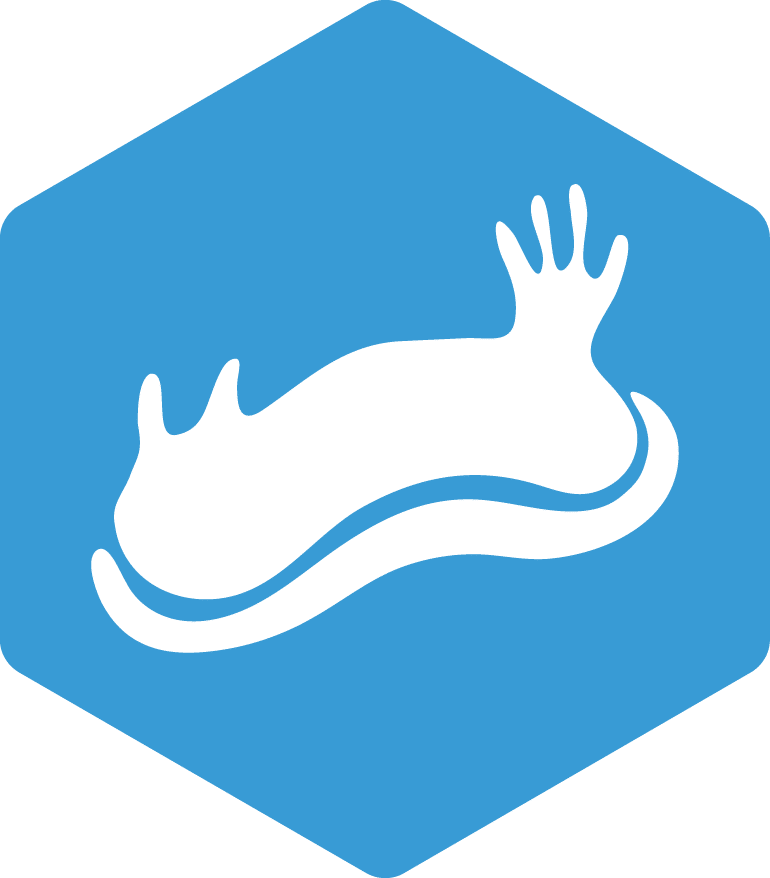
Nudibranchs, and other sea slugs, are a diverse and fascinating group of marine gastropods that have developed very colorful and ornate forms. Apart from being a favorite sighting by divers and photographers, their biodiversity is an indicator of total reef diversity, and also can be used when assessing changes in the physical or biological composition of marine areas in the face of disturbances. In our course you will learn about the ecology and taxonomy of sea slugs, and about how to conduct scientific surveys to monitor their abundance and diversity.
Prerequisites
- Be 12 years of age or older
- Be certified as an Advanced diver under a leading diving organization (PADI, SSI, RAID, etc) or an Open Water diver who has satisfactorily completed a buoyancy appraisal with a professional diver
- Demonstrate proper diving ability at an advanced level and be proficient in buoyancy and self-awareness
Standards
- Be able to differentiate between different families of sea slugs using anatomical features
- Learn various survey methods (endo-benthic, quadrat sampling, roving diver) used to survey for marine invertebrates in the muck.
- Be familiar with the hierarchical structure of taxonomy (phyla to species).
- Learn about the differences between morphological and molecular identification for marine invertebrates.
- Understand the ecological and economic role of sea slugs globally
Requirements
- Attend the nudibranch and sea slug lecture
- Complete the Sea Slug Quiz with a passing grade of at least 80%
- Attend at least 1 briefing involving procedures for diving in soft-sediment habitats (aka. muck habitat)
- Conduct at least 1 survey to observe and record sea slugs
- Complete identification of 2 different species (underwater or using photos) using online and library resources
Expected course time about 4 hours
Certification Card

Training Centers
- Hawai'i - Ocean Alliance Project
- Indonesia – Blue Marlin Conservation
- Madagascar - MRCI
- Thailand – ATMEC
- Thailand – Black Turtle Conservation
- Thailand – NHRCP
Published papers and studies based on this course
Scientific papers
- A new species of coral-feeding nudibranch (Mollusca: Gastropoda) from the Gulf of Thailand. by Rahul Mehrotra, Spencer Arnold, Adam Wang, Suchana Chavanich, Bert W. Hoeksema & Manuel Caballer
- Selective consumption of sacoglossan sea slugs (Mollusca: Gastropoda) by scleractinian corals (Cnidaria: Anthozoa) by Rahul Mehrotra, Coline Monchanin, Chad M. Scott, Niphon Phongsuwan, Manuel Caballer Gutierrez, Suchana Chavanich, Bert W. Hoeksema
- The extraordinary genus Myja is not a tergipedid, but related to the Facelinidae s. str. with the addition of two new species from Japan (Mollusca, Nudibranchia) by Alexander Martynov, Rahul Mehrotra, Suchana Chavanich, Rie Nakano, Sho Kashio, Kennet Lundin, Bernard Picton and Tatiana Korshunova
- The formerly enigmatic Unidentiidae in the limelight again: a new species of the genus Unidentia from Thailand (Gastropoda: Nudibranchia) by Tatiana Korshunova, Rahul Mehrotra, Spencer Arnold, Kennet Lundin, Bernard Picton and Alexander Martynov
- On the genus Armina (Gastropoda: Heterobranchia: Nudibranchia) in Thailand by Rahul Mehrotra, Manuel Caballer Gutierrez and Suchana Chavanich
- Species inventory of sea slugs (Gastropoda: Heterobranchia) for Koh Tao, Thailand, with 25 first records for Thai waters by Rahul Mehrotra and Chad M. Scott
- Predation on a sacoglossan gastropod by a mushroom coral by Rahul Mehrotra, Chad M. Scott, Joel M. Rohrer and Bert W. Hoeksema
Articles
- A new species of coral-eating nudibranch
- Corals Have Evolved to Eat Sea Slugs
- The Koh Tao Team Makes a New Nudibranch Discovery
- A New species of Sea Slug – Found on Koh Tao
Related Resources
